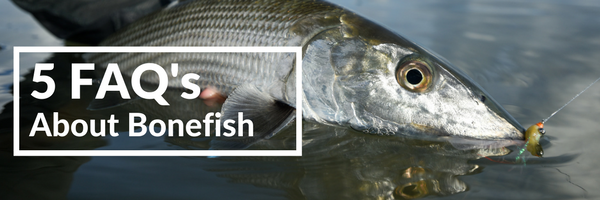Named in honor of the many, tiny bones within their bodies, bonefish are hardly considered sumptuous fare.
In fact, bonefish are virtually inedible. That’s why bonefishing is often an exercise in catch-and-release techniques. Bonefish are smart and stealthy. On sandy flat bottoms, their mirror-like scales function as built-in camouflage. It’s things like these that make catching bonefish, and learning more about them so appealing.
1. What is the average lifespan of a bonefish?
Bonefish are estimated to live between 19 and 23 years. These fish are fully mature at just three to four years old.
2. How big do bonefish grow?
There are bonefish on record that are as big as three feet. When bonefish reach full sexual maturity, they typically measure between 17 to 18 inches. Although they’re already at this impressive size at just three years of age, bonefish will continue increasing in length throughout the remainder of their lives. Keep in mind, however, that bonefish in different parts of the world can have very dramatic differences in lengths, weight, and looks. African and Hawaiian bonefish are known to be the largest. These fish can weigh up to 20 pounds. Conversely, bones found in Florida and the Bahamas generally cap out at about 14-16 pounds.
3. What do bonefish eat?
Bonefish survive on small crustaceans found living on the flat bottoms. They’ll eat worms, mollusks, shrimp, and tiny crabs. Bonefish will even eat other fish. Bones have long, narrow snouts that they can use to dig their meals out out of the gravel or sand. On cloudy, overcast days, you’ll often find bones tailing in extremely shallow waters in the mangroves. This is where the go to find crabs, shrimp, and snails.
4. What is a typical bonefish school size?
The size of a bonefish school is determined by the size and age of the bones within it. Bonefish can school in groups ranging from 40 fish to 400. When they’re young, small in size, and vulnerable, bones maintain their strength in numbers. Once bonefish grow larger, however, they become significantly more dependent and tend to school in increasingly smaller groups.
5. When is a good time to go bonefishing?
Bonefishing can be an enjoyable and incredibly productive activity year-round. There’s simply no best time to go, especially if you’re planning a bonefishing trip in the Bahamas. Each of the four seasons is distinct its own way, but every one of them offers fantastic opportunities to haul big bones in. The climate on Grand Bahama Island is a very consistent one and this means that no single month is known for providing more desirable conditions than any other. During the months of June and July, bonefishers can look forward to larger numbers of fish, but should expect slight smaller fish sizes. Throughout the cooler months of the year, from early October to mid-February, you’ll find fewer fish, but the fish that you do see will be noticeably larger. During the months of March through May, spawning groups will appear, and bonefish will be present in far larger numbers.









